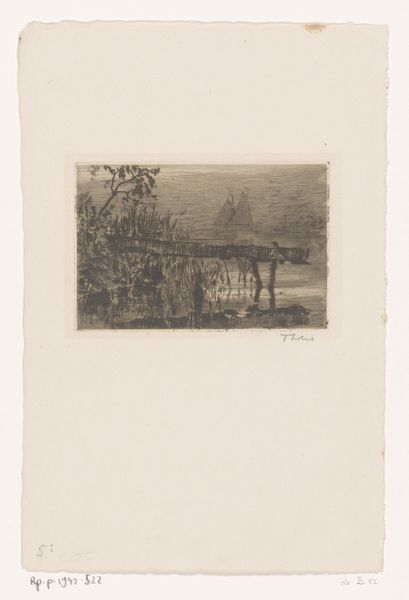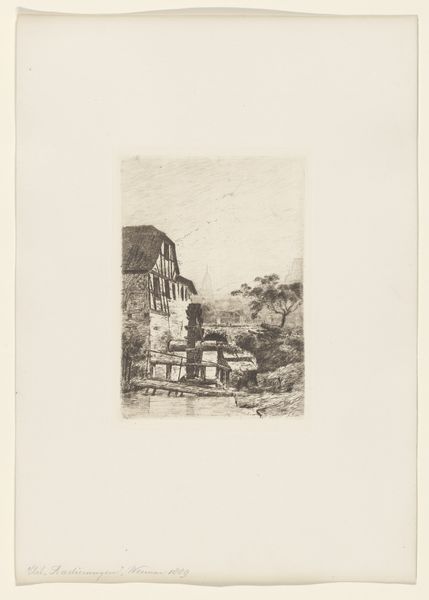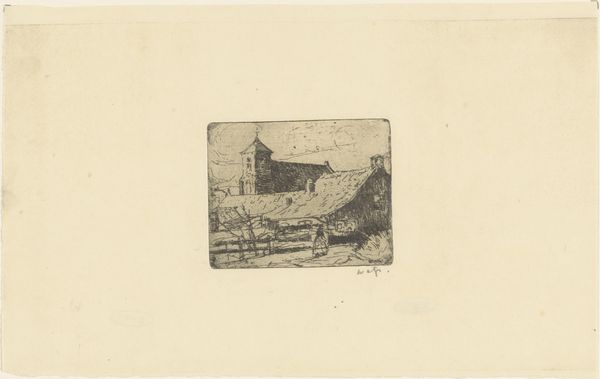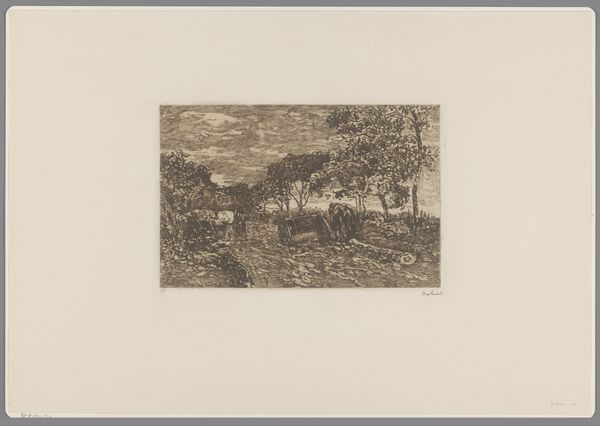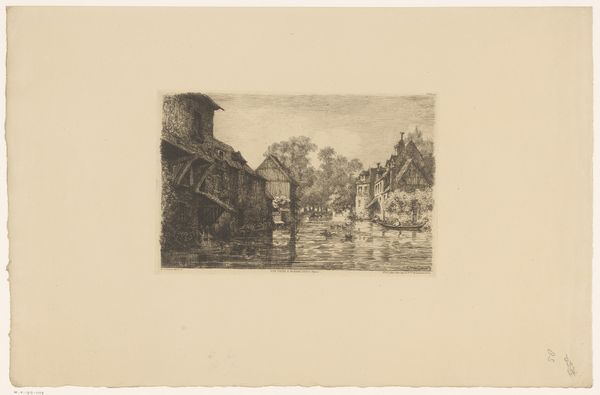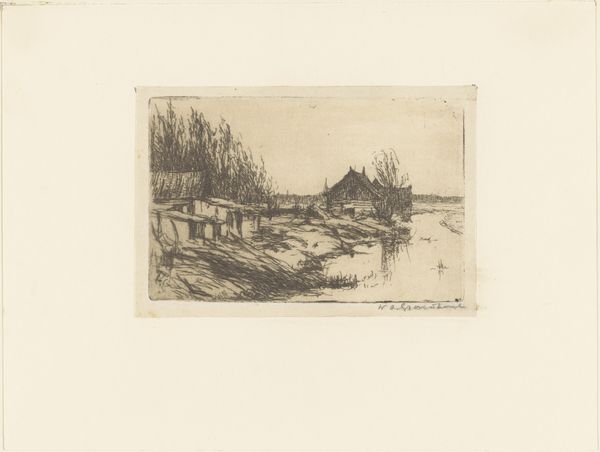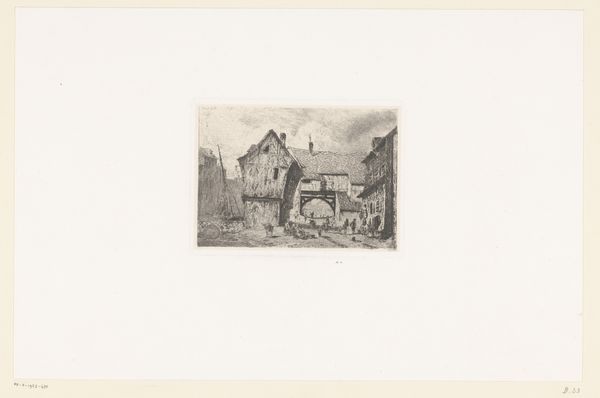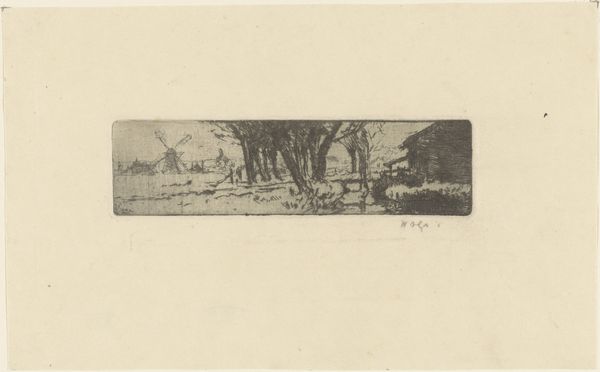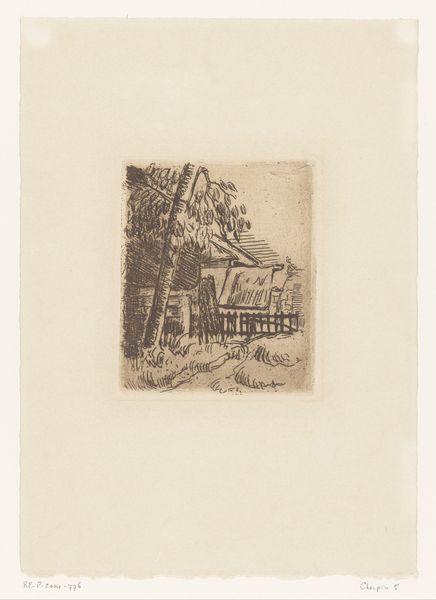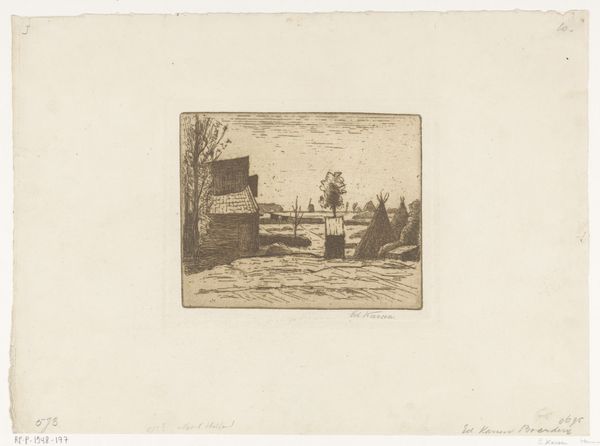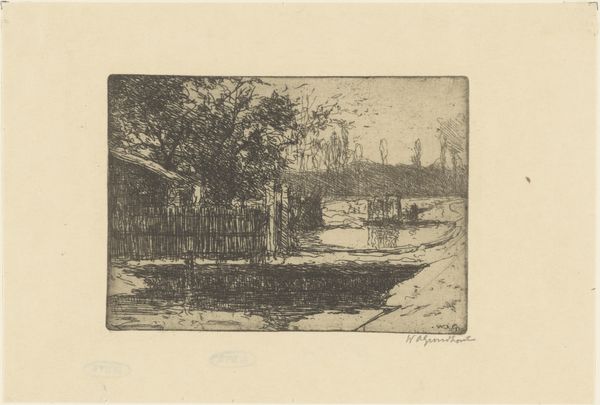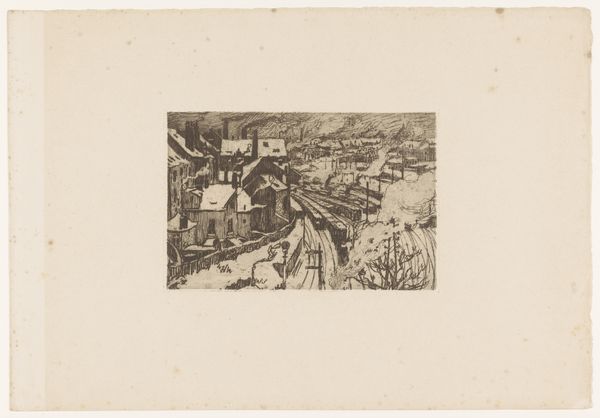
drawing, print, etching
#
drawing
#
pale palette
# print
#
etching
#
landscape
Dimensions: height 122 mm, width 166 mm
Copyright: Rijks Museum: Open Domain
Curator: Willem Adrianus Grondhout’s etching, "Slijpblok op een oever," or "Grindstone on a Shore" dates to sometime between 1888 and 1934 and depicts, as you might guess, just that! Editor: It has an air of quiet industry about it. The monochromatic palette lends it a somber feel. Curator: The pale palette actually aligns with the aesthetic movements of the late 19th century, engaging with similar images that seek to evoke an industrial and pastoral scene. The placement of the grindstone itself signifies how natural resources can be bent to industrial purposes. It is not vilifying the situation, however. There is the serene image of laborers coexisting with the natural environment that enables their livelihoods. Editor: That’s interesting because grindstones are fascinating emblems. They appear in so many visual traditions to evoke patience, toil, and gradual transformation. Curator: Absolutely, especially in the way the work is composed and the themes that can evoke. You will find many instances of labor being ennobled and valued during this era through depictions like this. But does the presence of a grindstone specifically change how the image could relate to Dutch identity at the time? Editor: Considering how water has been intrinsic to Dutch culture through milling, canals, and coastal industries, seeing it depicted with tools is fascinating. Water serves both a practical and a symbolic role. Curator: In that same light, do you see this image being applicable today in contemporary contexts as far as sustainability is concerned? The grindstone may be a primitive means of production compared to modern methods, but does it bear on contemporary narratives in that respect? Editor: In today’s framework, it provides a commentary on sustainable ways of extracting raw material. In an era defined by our concerns with automation and technology's heavy toll on the earth, this humble scene speaks volumes. Curator: Right. A visual bridge that joins historical reflections with pressing issues of today, prompting contemplation about the relationship we all bear with the world and our impact on it. Editor: Yes, I think the visual metaphor of transformation achieved slowly and deliberately still rings true. It's a poignant way to approach how our societies interact with this moment of climate transition.
Comments
No comments
Be the first to comment and join the conversation on the ultimate creative platform.
